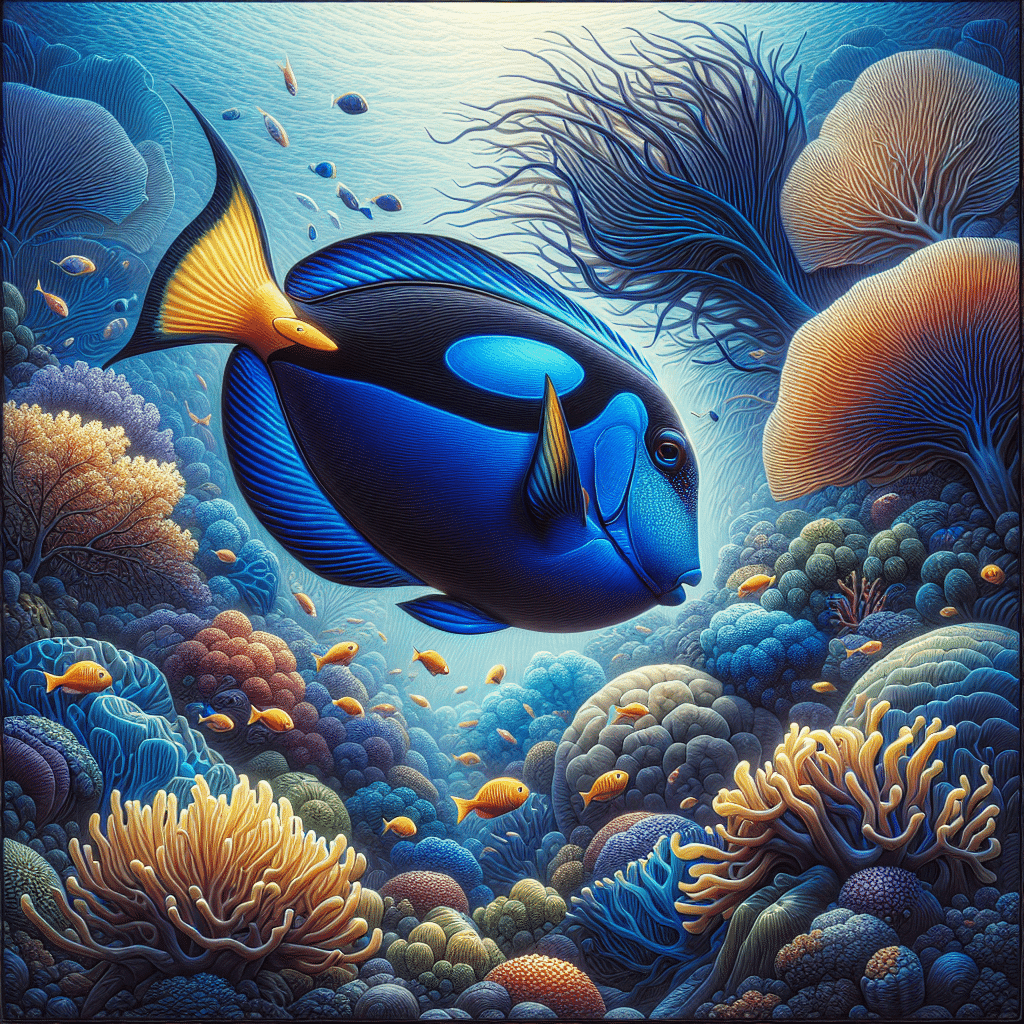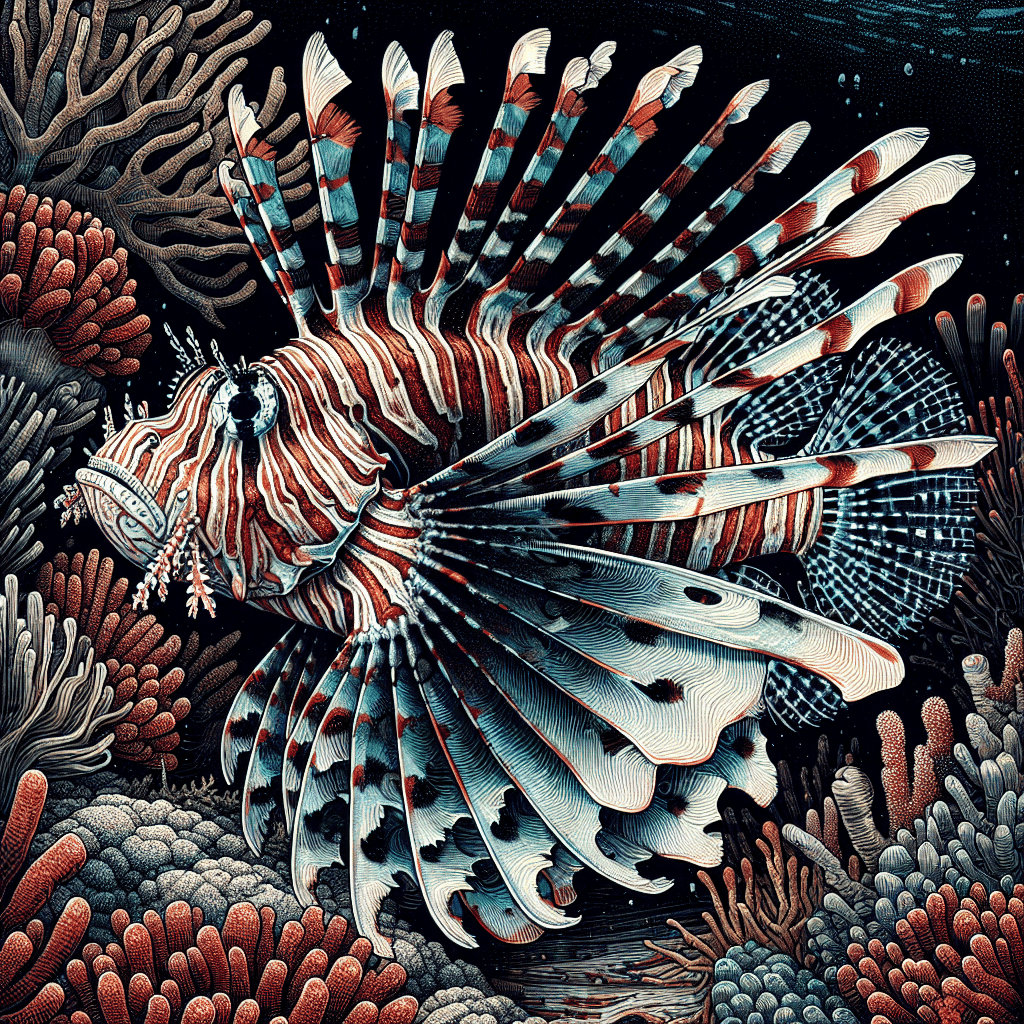Blue Tang Overview
The blue tang, also known as the regal blue tang, is a fascinating marine fish that belongs to the surgeonfish family. As a reef tank enthusiast, I find these vibrant creatures captivating, both for their beauty and their role in the ecosystem.
Habitat and Distribution
Blue tangs are primarily found in coastal waterways, inshore rocky regions, and coral reefs of the Indo-Pacific. They thrive in specific reef habitats, which means they are wide-ranging over these areas but limited to their particular environments (Niabi Zoo). Locations where blue tangs are commonly spotted include the Philippines, Indonesia, Japan, and the Great Barrier Reef of Australia. They have even made appearances in the Mediterranean Sea off Israel in recent years (Wikipedia).
The blue tang is often collected from the Caribbean basin for the aquarium trade, making it a popular choice for saltwater aquarists (SeaWorld). They seek refuge in coral and rocky crevices to escape predators, showcasing their adaptability to their environments.
| Region | Presence of Blue Tang |
|---|---|
| Indo-Pacific | Yes |
| Caribbean Basin | Yes |
| Mediterranean Sea | Rare |
Physical Characteristics
The blue tang is easily recognizable by its striking blue body and bright yellow tail, making it a standout in any reef tank. Here are some key physical characteristics:
- Color: Vibrant blue with a yellow tail and a black ‘palette’ shape on its side.
- Size: They typically grow to around 12 inches (30 cm) in length.
- Body Shape: Oval body typical of the surgeonfish family, with a spine on each side of the tail.
This unique coloration not only makes blue tangs visually appealing but also plays a role in their behavior and interactions within their habitat. If you’re considering adding a blue tang to your tank, be sure to provide plenty of space and hiding spots for their comfort.
With their captivating features and vital role in reef health, blue tangs are a great addition to any marine aquarium. For more information about other marine fish that might complement your reef tank, check out our articles on marine fish and related species like clownfish or triggerfish.
Blue Tang Behavior
Understanding the behavior of the blue tang can greatly enhance the experience of keeping this vibrant species in a reef tank. From their feeding habits to their reproduction, these fish have unique characteristics that make them fascinating to observe.
Feeding Habits
Blue tangs are primarily herbivorous as adults, mostly feeding on filamentous algae. They play an important role in maintaining reef health by controlling algae populations, which helps prevent overgrowth and suffocation of corals. I find it interesting that blue tangs can feed singly, in small groups, or even in large aggregations of over 100 fish. When they gather in larger numbers, they are capable of ravaging gardens of damselfish on the reef.
| Feeding Type | Description |
|---|---|
| Herbivorous | Adults mainly consume filamentous algae. |
| Plankton | Juveniles primarily eat plankton, while adults may also eat it. |
| Group Feeding | Can feed alone, in small groups, or in large aggregations. |
It’s essential to provide a diet that mimics their natural feeding habits in an aquarium setting. Including algae-based foods and occasional plankton can help ensure their health and well-being.
Reproduction and Breeding
When it comes to reproduction, blue tangs exhibit fascinating behaviors. During spawning, mature blue tangs form schools where females release eggs above coral while males release sperm. A single spawning session can result in the release of approximately 40,000 eggs, which hatch within about 24 hours.
Blue tangs reach maturity between nine to 12 months of age, and they can live up to 30 years in the wild. Their reproductive habits not only contribute to their population but also play a crucial role in maintaining the ecological balance of the reef environment.
To learn more about the care and feeding of blue tangs in your aquarium, check out our resources on marine fish for tips and recommendations.
Blue Tang in the Wild
Role in Reef Health
The blue tang is not just a pretty face in the reef; it plays a vital role in maintaining the health of coral ecosystems. As adults, blue tangs primarily feed on filamentous algae. By grazing on these algae, they help control populations that could otherwise overgrow and suffocate corals. This behavior is essential for keeping the reefs vibrant and flourishing. Blue tangs can be found feeding singly, in small groups, or even in large schools of over 100 fish, which can have a significant impact on the algae levels within the reef (Animal Diversity Web).
Not only do blue tangs consume algae, but they also engage in cleaning behaviors, where they help remove parasites from larger marine animals like green turtles. This cleaning interaction benefits the turtles and helps maintain overall reef health. Their role in the ecosystem is crucial, especially in preventing algal overgrowth that can lead to coral suffocation.
Predators and Threats
Despite being essential to the reef ecosystem, blue tangs face threats from various predators. Major predators include reef sharks, tunas, snappers, jacks, groupers, and barracudas (Animal Diversity Web). These predators can significantly impact blue tang populations, especially in areas where their numbers are already stressed.
In addition to natural predators, blue tangs are threatened by human activities such as overfishing and habitat destruction. As aquarium fish, they are also harvested for the pet trade, which can further deplete their populations in the wild. Protecting the blue tang is not just about conserving a single species; it is about preserving the delicate balance of the entire reef ecosystem.
Understanding the role of blue tangs in reef health and the threats they face is crucial for anyone interested in marine life and conservation efforts. If you’re curious about keeping these vibrant fish in your own aquarium, you can check out more on marine fish to learn about their care and habitat needs.
Blue Tang in Captivity
Keeping a blue tang in my aquarium can be a rewarding experience, but it comes with its own set of care tips and challenges. Here’s what I’ve learned about these vibrant fish.
Aquarium Care Tips
Blue tangs are known for their striking blue color and lively personality, making them a popular choice for saltwater tanks. Here are some essential care tips for keeping a blue tang healthy:
| Care Aspect | Recommendation |
|---|---|
| Tank Size | Minimum of 75 gallons for adult blue tangs |
| Water Temperature | Between 72°F and 78°F (22°C – 26°C) |
| Salinity | 1.020 to 1.025 specific gravity |
| pH Level | Maintain a pH between 8.1 and 8.4 |
| Diet | Algae-based foods, high-quality pellets, and occasional meaty foods |
| Filtration | Strong filtration to maintain high water quality |
Blue tangs thrive in a well-maintained reef tank with plenty of algae to graze on. Providing a varied diet helps support their health and vibrant colors. I often include algae sheets or specialized pellets to ensure they receive the necessary nutrients.
For more information on suitable tank mates, consider looking into other marine fish that coexist well with blue tangs.
Challenges and Considerations
While blue tangs can be stunning additions to my aquarium, they also come with challenges. Some considerations include:
- Aggression: Blue tangs can exhibit territorial behavior, especially toward other tangs. It’s best to introduce them to a tank with plenty of hiding spots to reduce stress.
- Space Requirements: Blue tangs require ample swimming space due to their active nature. A larger tank is essential to prevent stunting their growth and ensure they have enough room to thrive.
- Health Risks: Handling blue tangs can pose risks due to their caudal spine, which can cause injuries if not careful. Always use caution when handling them to avoid deep wounds and potential infections (Wikipedia).
- Algae Control: Since blue tangs play a role in controlling algae growth on coral reefs, ensuring they have enough algae in the tank is crucial to keep them healthy while preventing overgrowth that can harm corals.
Incorporating blue tangs into my aquarium requires careful planning and consideration. Understanding their needs will help create a thriving environment for both the fish and the coral ecosystem. If you’re interested in other reef tank fish, check out species like clownfish or grouper that can complement your setup.
Blue Tang Conservation
Threats to Population
The blue tang, also known as the regal blue tang, faces several threats that impact its population. Although it is classified as “Least Concern” by the IUCN, it encounters challenges from overexploitation, especially for the aquarium trade. Many blue tangs are collected from the Caribbean basin for commercial purposes, making them a popular choice for saltwater aquariums (SeaWorld).
In addition to overfishing, habitat destruction poses a significant risk. Coral reefs, which provide essential ecosystems for blue tangs, are increasingly threatened by climate change, pollution, and destructive fishing practices. The health of the coral reefs directly influences the survival of blue tangs, as they rely on algae that grow on these reefs for food (Wikipedia).
| Threats | Impact |
|---|---|
| Overexploitation for aquarium trade | Decreased wild populations |
| Habitat destruction (coral reefs) | Loss of feeding and breeding grounds |
| Use as bait in fisheries | Further decline in numbers |
Conservation Efforts
To address these threats, various conservation efforts have been implemented. Breeding blue tangs in captivity has gained traction, and the first successful captive breeding was achieved in 2016 after a six-year effort (Wikipedia). This initiative aims to reduce the pressure on wild populations by providing an alternative source for aquarium enthusiasts.
Additionally, raising awareness about the importance of blue tangs in maintaining coral reef health is crucial. As blue tangs feed on algae that can overgrow and choke coral, their role is vital for the balance of the reef ecosystem. By promoting responsible aquarium practices and discouraging the capture of wild specimens, hobbyists can contribute to blue tang conservation.
Collaborations with organizations dedicated to marine conservation are also essential. These partnerships can help establish policies that protect coral reefs and regulate the aquarium trade to ensure sustainable practices. For more information on marine fish care, check out our article on marine fish.
Blue Tang Fun Facts
Unique Adaptations
The blue tang is quite the character in the reef tank world, and its adaptations make it stand out. When they’re newly hatched, blue tangs are bright yellow with blue spots around their eyes. As they grow up, they transform into a stunning blue color, with just a couple of yellow spots remaining on their fins and tail. This color change not only makes them beautiful but also helps them blend into their vibrant habitat.
One of the most fascinating features of blue tangs is their scalpel-like spine along the top of their body and a venomous spine at the base of their caudal fin. These adaptations are crucial for protecting them from predators. Interestingly, blue tangs can also “play dead” by lying on their side when they sense danger, remaining still until the threat passes.
| Adaptation | Description |
|---|---|
| Color Change | Yellow at birth, turning blue with age |
| Scalpel-like Spine | Provides protection from predators |
| Venomous Spine | Located at the base of the tail |
| “Playing Dead” Behavior | Lays on side to deter predators |
Interesting Behaviors
Blue tangs have a host of intriguing behaviors that make them even more captivating. For instance, male blue tangs often engage in a unique “fencing” ritual, using their sharp spines to establish dominance over one another. This behavior is not only entertaining to watch but also plays a role in their social structure.
During the breeding season, blue tangs exhibit a distinctive spawning behavior. Males aggressively court females, leading to a rapid upward rush toward the water’s surface for spawning. After fertilization, the eggs hatch within twenty-four hours, resulting in tiny, translucent larvae with silvery abdomens and rudimentary tails.
The blue tang’s role in the ecosystem is also noteworthy. They are essential for coral health, as they feast on algae that can otherwise overgrow and choke the coral. This feeding behavior helps maintain the balance of the coral reef ecosystem, making them an integral part of the aquatic environment.
| Behavior | Description |
|---|---|
| Fencing | Males establish dominance with their spines |
| Spawning | Quick upward rush toward the surface to spawn |
| Coral Health Role | Feeds on algae, helping maintain coral balance |
Blue tangs are not just beautiful fish; their unique adaptations and behaviors make them a vital part of any reef tank. If you’re considering adding one to your aquarium, you’ll appreciate their dynamic nature and the role they play in keeping your marine environment healthy. For more information on different marine species, check out our articles on marine fish and specific fish like the clownfish or pufferfish.



